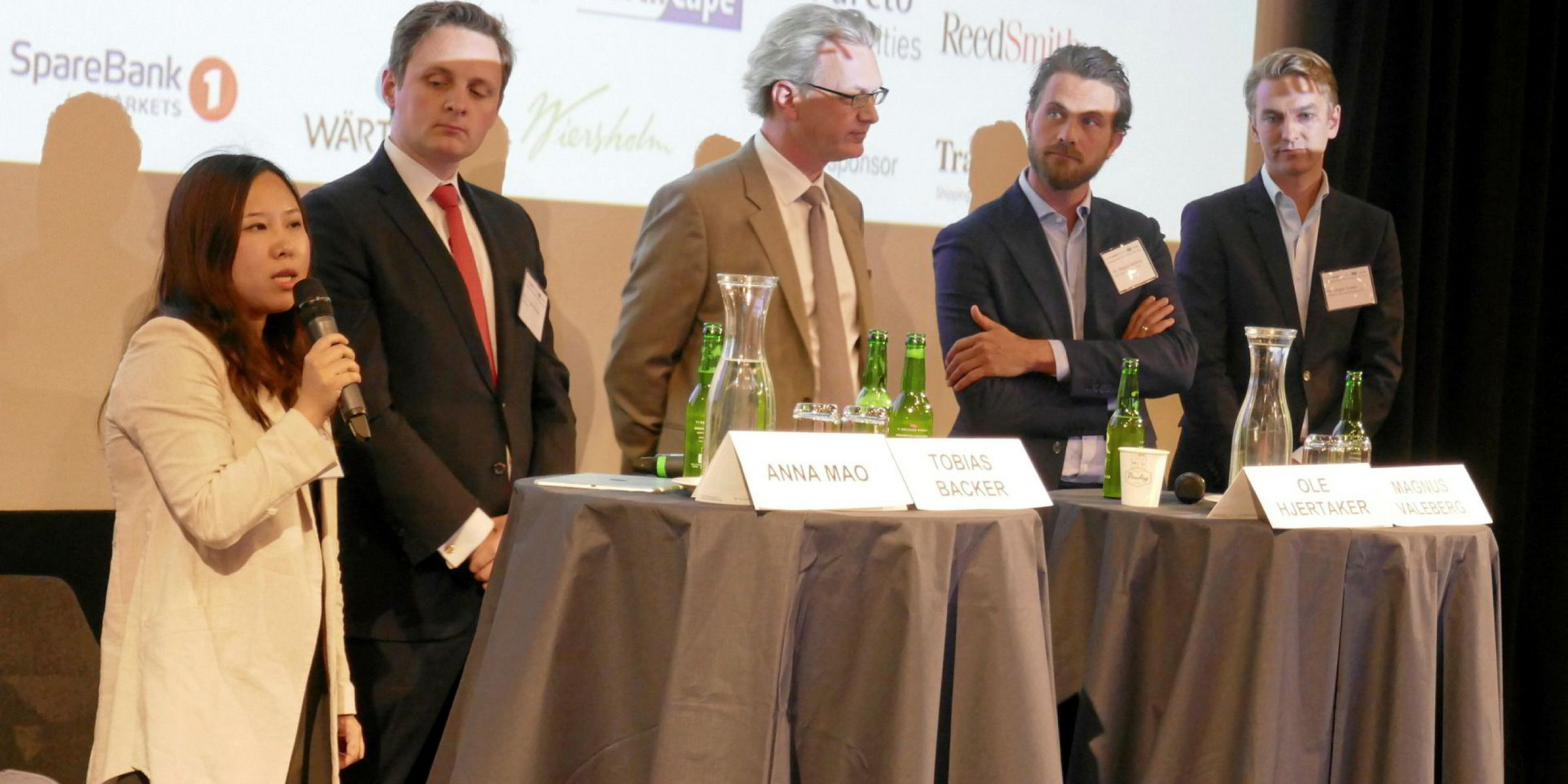China Merchants Bank Financial Leasing (CMBFL) is touting a recent car-carrier transaction with Norwegian owner Peter Gram as the “dream deal” in its template for future business.
Anna Mao, who is a senior manager for shipping finance, spoke of the deal when asked to describe CMBFL’s preferred strategy at Marine Money’s 19th annual Ship & Offshore Finance Forum in Oslo this week.
Mao was taking part as a panelist in the “alternative capital providers” discussion, which included Ole Hjertaker of Ship Finance International, Tobias Backer of Fleetscape, Magnus Valeberg of AGC Equity Partners, Jorgen Solem of Offshore Merchant Partners and moderator Kristine Hasle Overby, a lawyer with Wiersholm.
CMBFL is one of China’s five largest leasing houses, which have together grown their market share about six times in five years, as TradeWinds has reported.
Mao says CMBFL and other Chinese leasing houses are becoming much better known by European shipowners and financial institutions, mainly because of this rapid growth and “the big deals closed” recently.
Among those large deals, Mao underscores CMBFL’s $650m transaction with CMA CGM, which was Marine Money’s “deal of the year” in 2016, as well as more recent investments with Maersk Lines.
“I think those deals, for us, are more like corporate financing instead of asset financing. We admit that as a new starter in the shipping finance market, we like big deals with top tier clients like Maersk and CMA CGM,” said Mao.
“But, strategically, this would not be a ‘dream deal’ for the sustained, long term, due to the concentration of risks.”
As an example of CMBFL’s preferred target, Mao points to the transaction closed in the first quarter of this years with Gram Car Carriers, which is a sale-leaseback for one 6,700-ceu PCTC newbuilding.
“This is a clear presentation for our strategy in seeking a diversified, asset-backed, healthy portfolio with traditional shipowners,” said Mao.
“I think this would be one of the typical deals we would like to look at because this is a traditional shipowner with a long history, middle sized, good financial performance in the past years, and a good cash flow from the charters attached.”
Mao points to the company’s good credit and track record, while specifically describing owner Peter Gram’s reputation in the sector as “honourable” in Norway and in China.
She says CMBFL prefers assets built at reputable yards but that Chinese content in a deal “is not so necessary for us”.
“I would say that we hope that this deal [with Gram] will help us get in closer to the Norwegian market and open the door for more co-operation in this market,” commented Mao.
CMBFL, which was set up in 2008, focused largely on domestic clients for its first five years but moved internationally after about 2015, when the opportunity arose from an unwillingness of the capital markets to make investments in shipping projects, says Mao.
“We would admit that, yes, on the one hand, we are learning from the experiences of the European banks but, as a new starter, we also do not have so much of a historical burden, which enables us to be more flexible in the market,” she said.
Now CMBFL has total assets of $20bn, with the shipping sector contributing about $3.5bn, she adds, while commenting on the state of play in the industry now.
“From the asset perspective, in many sectors the asset prices have almost reached the bottom but from the cash-flow perspective, I would say that for some deals, we still need to wait to find the right level,” said Mao. “We always believe that there will be deals in the market. You just need to find the proper structure.”




